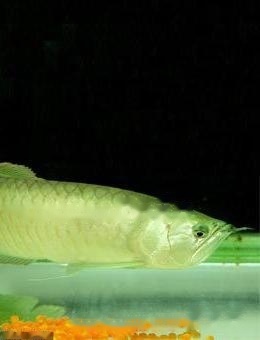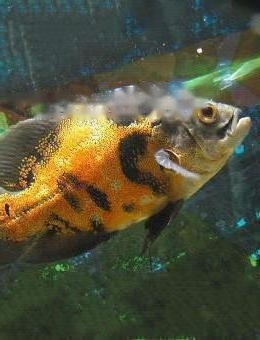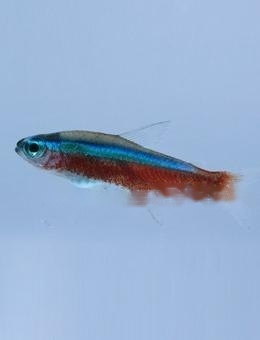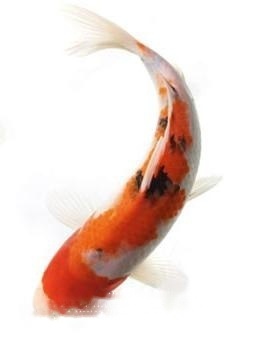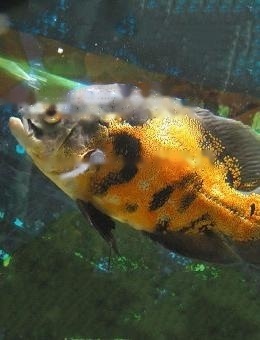4. Common Diseases White and cloudy eyes Reason: This is due to the injury of the eye membrane, the invasion of Mycobacterium tuberculosis, Vibrio, or HP Caused by shock, improper medication, poor water quality (NO2-), and nitrogen entering the fish. Symptoms: White fog appears on the eye mask in the early stage, mostly in one eye, the eyeball is cloudy in the middle stage, and the eye is swollen in the end stage, and white cotton wool cones grow. If this period is not handled properly, there will be fear of death. Treatment method: (1) Initial stage: The fish eye mask is found to have white fog at the initial stage, and one third of the water should be changed immediately, and appropriate coarse salt should be added to the concentration of Five thousandths; that is, 200 liters of water are put into a pound of coarse salt, and heated to 30 ℃ ~ 32 ℃. Observe whether it improves in two days. If there is no deterioration, you need to strengthen the water change, change a quarter of the water every three days, and add an appropriate amount of salt to recover. (2) Mid-term: It is necessary to administer medicine for medicated bath treatment. Use water-soluble chlortetracycline, penicillin, or fish-specific drugs. If you use special medicine for fish, you can use it according to the instructions; put 10,000 to 20,000 units of chlortetracycline and penicillin per liter of water. During the medicated bath, the temperature should be increased by 2 ℃ ~ 3 ℃, and the observation should be carried out. Note: The clouding of the eyeball is serious, and the recovery time is slow, and it will take about three to five months to heal. If the swelling disappears, the dose can be reduced or discontinued. After recovery, the black eyeballs will be smaller than before, but there is no serious problem. White spot disease Cause: This disease is caused by protozoa, the pathogen is called white spot worm, which penetrates deep into the cells of the skin, reproduces asexually, and forms white spots. Small punctate cysts. The fish with this disease is covered with white spots all over the body, and each white spot cyst contains many young white spot worms. In the water, it returns to the fish to attack the skin, forming more small white spots. Symptoms: In the early stages of illness, the body rubs against hard objects, hoping to remove pesky pathogens from the body. Many small white spots can be seen on the body surface, fin rays and gills of diseased fish. Sick fish are thin, floating on the water surface or in a cluster, and rarely move. In the later stage, the body surface seems to be covered with a white film, the mucus increases, and the body color is dull. Treatment method: 1. Use the method that the white spot is not resistant to high temperature, and increase the water temperature to 30 degrees. To promote the rapid maturation of the spores produced on the surface of the fish, accelerate its growth rate, and change the water after they fall off the surface of the fish. 2. Treat with mercurous nitrate and malachite green (Note: These two drugs are often mentioned in some books, but these two drugs are highly toxic products, which will cause great harm to the human body. It is very easy to cause cancer. Therefore, it is not recommended to use it, and it is mentioned here to remind everyone that it should also be avoided in the treatment of other diseases!) 3. Red syrup treatment. The key to this method is not to add too much, as long as the water color is slightly reddish, rather less than too much! Soak for 5-10 minutes, 1-2 times a day. Rotten tail and fins Causes: The reasons are mostly due to poor feeding water, long-term turbid feeding water, excessive stimulation by new water, poor water quality, or fish eating Insufficient, fish bite each other causing bacterial infection. Symptoms: mildly decayed fins and bacterial infection. The edges of the fins of the diseased fish are milky white, followed by rot, and the fin rays are incomplete, especially the caudal fin. If fin rot is not treated in time, it can also spread the disease to fish. Therapeutic methods: (1) Dissolve 1 gram of nitrofurazone or furazolidone in 10 kg of water, soak the sick fish for 10-20 minutes, and the condition can be relieved after multiple treatments. (2) Put 3--5 pieces of dysentery in 100 kg of water, and soak the sick fish for 30 minutes. (3) Put 5--8 pieces of oxytetracycline in 100 kg of water for immersion and disinfection, which can prevent juvenile or adult fish from contracting the disease. (4) Dip with gentamicin, usually put 2 sticks in the middle of 100*50*35CM. (5) Dissolve 0.1 g of potassium permanganate in 10 kg of water, and soak the sick fish for 10 minutes. (6) Put in an appropriate amount of methyl blue syrup, penicillin, green F gold or use thin saline for feeding. Squash disease Cause: It is caused by protozoa worms invading the skin or gills of fish. Its small melon is a kind of ciliate among protozoa. Microscopic examination showed that the adult worms had a large horseshoe-shaped nucleus. Juveniles have only round, oval or rod-shaped large nuclei. The insect body is soft and plastic, and its shape is changeable. This disease is one of the most common frequently-occurring diseases in China. Its onset is characterized by rapid infection, wide prevalence and great harm. Symptoms: White spot disease is caused by ciliate infection. Initially, there are some white spots on a certain part of the fish body. After a few days, the white spots will spread to the whole body. It is often lying at the bottom of the box and is still, loss of appetite. During the swimming action, in the later stage, the fish body secretes a large amount of white turbid mucus. The incidence of white spot disease is high and the infection is fast, and it often occurs in the seasons with large temperature changes in early spring, plum rain and early autumn. The fish transfer box or the water temperature is changed too quickly, will cause white spot disease. White spot disease should be detected early, treated early, and the cure rate is high. For example, in the later stage, due to the loss of appetite and physical fitness of the infected fish, it is easy to issue other diseases. Treatment method: The weakness of small melon insects that are not resistant to high temperature is often used, the water temperature is increased, and drug treatment is provided. Usually, the cure rate can reach more than 90%. If treated in time, the cure rate can reach 100%. Malachite green at 0.05 parts per million (0.05ppm) and formaldehyde solution at 25 parts per million (25ppm), the effect is better; 1% saline can also be used Soak for several days, or soak with two millionths (2ppm) methyl blue solution for 6 hours a day; or soak with two millionths (2ppm) quinine hydrochloride solution at 28-30℃ for 3-5 days, or soak in mercurous nitrate solution of two parts per million (2ppm) for 30 minutes; or soak in red mercury solution with concentration of fifty to seventy parts per million (50 to 70ppm) for 5 to 15 minutes, or Splashing with 0.1-0.2ppm (0.1-0.2ppm) mercuric nitrate solution can achieve good results. |
